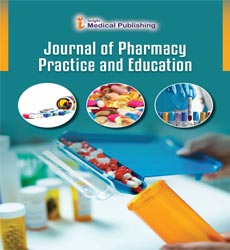Birth Asphyxia in Neonates
Sofia Arshad*
Department of Pharmaceutical Sciences, Liaquat University Of Medical and Health Sciences, Jamshoro, Pakistan
- *Corresponding Author:
- Sofia Arshad
Department of Pharmaceutical Sciences
Liaquat University of Medical And Health Sciences
Jamshoro, Pakistan
E-mail: arshad.s@gamil.com
Received Date: August 03, 2020; Accepted Date: August 17, 2020; Published Date: August 24, 2020
Citation: Arshad S (2020) Birth Asphyxia in Neonates. J Pharma Prac Edu Vol.3 No.3:e032.
Editorial
Cross sectional study was conducted in Allied Hospital Faisalabad; all neonates of term without other physiological abnormalities were included. 50 cases were taken with their mother history of obstetric period and observational data were collected to assess the factors to birth asphyxia. Questionnaire was used as data collection tool. Data were analyzed through SPSS.
A study is published in 23 June 2015 by Olusegun Joseph Adebami done In Neonatology Unit Pediatric Department and Child Health Technology University of Teaching Hospital Nigeria Southwestern. In this study author explained the cause and effect of oxygen lacking in newborns. He assessed all factors which create this situation of lacking oxygen known as neonatal hypoxia. This hypoxic condition leads to high morbidity and mortality rate in neonates. This is a fatal reality all over the world. He found that poor antenatal care, low socioeconomic status of pregnant ladies, illiteracy, lack of awareness about pregnancy, unavailability of educational programs in local areas to pregnant ladies, and those ladies who are taking guidelines from Dais. These factors are from the mother side. Other factors which also contribute to this condition are the mal-presentation, breech delivery, and cord around the neck, shoulder dystocia, hand prolapse, oligohydramnios and stress conditions of mothers. In article he advocates that if health facilities for deliveries and the up-gradation of socioeconomic status will reduce the morbidity and mortality rate.
An Italian journal of pediatric on birth asphyxia was conducted in june 2015- May 2016 in Institute of Health Sciences in Dharan Nepal. It was prospective observational study in neonates with birth asphyxia. In which it was shown that electrolytes play a major role in asphyxia. Asphyxia is an ischemic condition in which tissues are deprived of oxygen and affecting body systems. Sodium, potassium and calcium have a great impact on asphyxia. There is a positive relation between asphyxia and sodium level, and negative relationship between potassium level to asphyxia. Three types of asphyxia are dependent on ranges of these electrolytes like in 1st degree on birth asphyxia Na is 135, in 2nd degree is 130 and in severe is 127. Potassium level has negative relation so as the potassium levels increase the complexity of asphyxia increase as 1st, 2nd and 3rd has 4,5 and 6 levels of potassium respectively.
This study was conducted in Nepal from April 2010 to June 2010 in tertiary care hospital of Nepal. This study was published in 2015. In this study that there is an association between neonatal asphyxia and Meconium Aspiration Syndrome (MAS). Premature rupture of membranes leads to hypoxia which cause the meconium pass in the mother’s uterus and baby inhaled this and develop MAS. This aspiration leads the baby toward apneas and respiratory distress and pulmonary hypertension. Due to these fatal outcomes there produce the need of ambo bagging and even ventilation. Mostly neonates do not recover and get complications more and more. In this way the disease rate and death rate of neonates increase. By taking quick action on the appearance of meconium pass sign, complications can be prevented. Effective identification and proper guidelines upon rupturing of membranes to delivery conductors and pregnant ladies can reduce the disease and death rates among neonates.
Open Access Journals
- Aquaculture & Veterinary Science
- Chemistry & Chemical Sciences
- Clinical Sciences
- Engineering
- General Science
- Genetics & Molecular Biology
- Health Care & Nursing
- Immunology & Microbiology
- Materials Science
- Mathematics & Physics
- Medical Sciences
- Neurology & Psychiatry
- Oncology & Cancer Science
- Pharmaceutical Sciences
